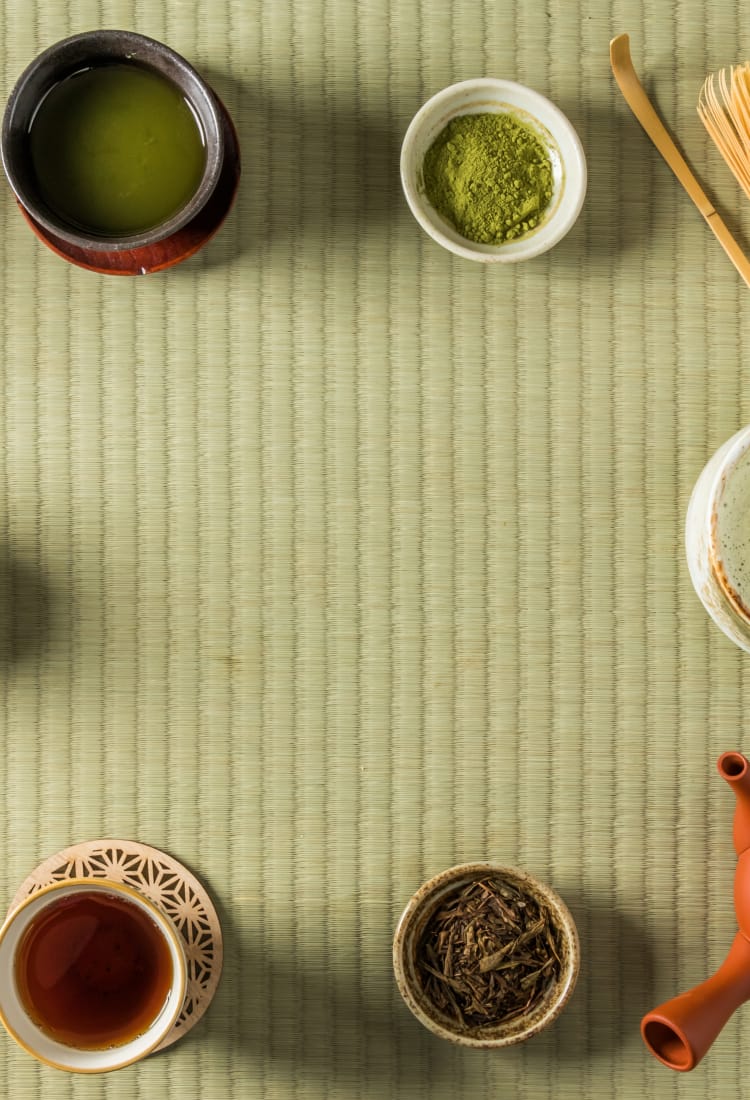Though it originated in China, the tea ceremony has become one of the most quintessentially Japanese experiences.
The tea ceremony sees the simple task of preparing a drink for a guest elevated to an art form, an intricate series of movements performed in strict order—and appreciated by the recipient.
The tea ceremony —or, directly translated, the "way of tea"—is in many ways a microcosm of the Japanese traditional sense of omotenashi, which translates as to look after guests wholeheartedly.
The tea ceremony is known as chanoyu, or sado, in Japanese, and the art and performance of preparing and presenting matcha powdered green tea is called otemae. Chakai are informal gatherings held to appreciate the ritualized serving of tea, while the more formal occasion is a chaji. An alternative, but less common, version of the ceremony uses tea leaves and is known as senchado.


Roots in Zen Buddhism
The tea ceremony is considered one of the three classical arts of Japanese refinement and, alongside kodo incense appreciation and kado flower arranging, can be traced back to Zen Buddhism in the year 815. In that year, the monk Eichu returned from China—where tea had already been consumed for more than a thousand years—and personally prepared sencha for the Emperor Saga.
Impressed, the emperor ordered tea plantations to be cultivated in the Kinki region of western Japan and nobles began to take to the drink, although it was not until the 12th century that tea started to catch on more widely.

Monks' religious rituals
Green tea was adopted for religious ceremonies in monasteries and drinking tea soon became associated with the elite strata of Japanese society. Tea parties became fashionable, and it was widely accepted that the finest green tea grew in Kyoto from seeds another monk had brought to Japan from China.
The dawning of the 1336-1573 Muromachi Period saw Japan's aesthetic emerge, including in the tea ceremony, and by the 16th century drinking tea was common among all levels of Japanese society.
Sen no Rikyu is arguably the best-known figure in the history of Japanese tea and held the philosophy that every meeting should be treasured because it can never be fully recaptured. He identified principles that must be incorporated into the tea ceremony: harmony, respect, purity, and tranquility.

Schools of tea ceremony
Modern masters adhere to the same rules, although there are dozens of different schools of the tea ceremony, each with subtle differences.
A tea ceremony will traditionally take place in a purpose-built chashitsu tea house, featuring a tatami-mat floor with a hearth built into it. The materials used for the building and the design are deliberately rustic.
A tea master uses a number of specialist implements, including the chawan tea bowl, a scoop for the powdered tea made from bamboo and a tea whisk, known as a chasen, also carved from bamboo.


Precise procedures
While the precise actions of a tea ceremony vary slightly between the schools, there are a number of similarities. Guests take off their shoes before being ushered into the waiting room of the tea house. Greeted with a silent bow from the host, they ritually purify themselves at a stone basin by washing their hands and rinsing their mouths before they enter the tatami-mat room, where they are expected to comment on the scroll that is hanging in the alcove or the seasonal flower arrangement.
As soon as the guests are seated in the seiza kneeling position, the tea master begins the ceremony by cleaning the utensils meticulously and in a precise order. The tea is prepared in a kettle over a charcoal fire with similar attention to detail, and the final brew is poured into a bowl that is handed to the first, most important guest.
The recipient is expected to raise the bowl in a mark of respect to the tea master, rotate it slightly to avoid drinking from the front, take a sip and then compliment the master on the taste and the bowl in which it's served. The bowl is then passed to the next guest, who repeats the procedure until each guest has sampled the tea.

Importance of etiquette
Etiquette is a significant part of the entire experience, and the tea master will invariably wear a kimono for the ceremony. Guests attending formal occasions should follow suit, although rituals put on to demonstrate the procedures to visitors do not require formal attire. Anyone who has the opportunity to experience a tea ceremony should, however, endeavor to follow the appropriate moves, although minor faux pas are always overlooked.
Guests may then be served small sweet cakes while the host prepares a second bowl of thinner tea for each guest, with participants expected to comment on the beauty of the setting and the craftsmanship that has gone into the utensils used in the ceremony. Aesthetically pleasing, light meals using seasonal ingredients are often served as part of the tea ceremony.
A number of temples, traditional Japanese gardens, cultural facilities, and hotels have tea houses where visitors can experience a tea ceremony—particularly in Kyoto, the ancient capital that is still the center of Japan's traditional culture. And while a full, formal tea ceremony can last several hours, many venues offer abbreviated versions that may be more suitable for foreign guests.


Studying the tea ceremony
For anyone who wishes to learn more about this age-old tradition, tea schools across the country offer courses in tea appreciation and the precise steps that are a feature of the ceremony. Such courses are still popular among young women and are believed to be a mark of respect through grace and proper etiquette, although it is widely accepted that becoming proficient in the art will take many years. Even masters of the ceremony who have devoted much of their life to its intricacies will insist they are still learning.






























































